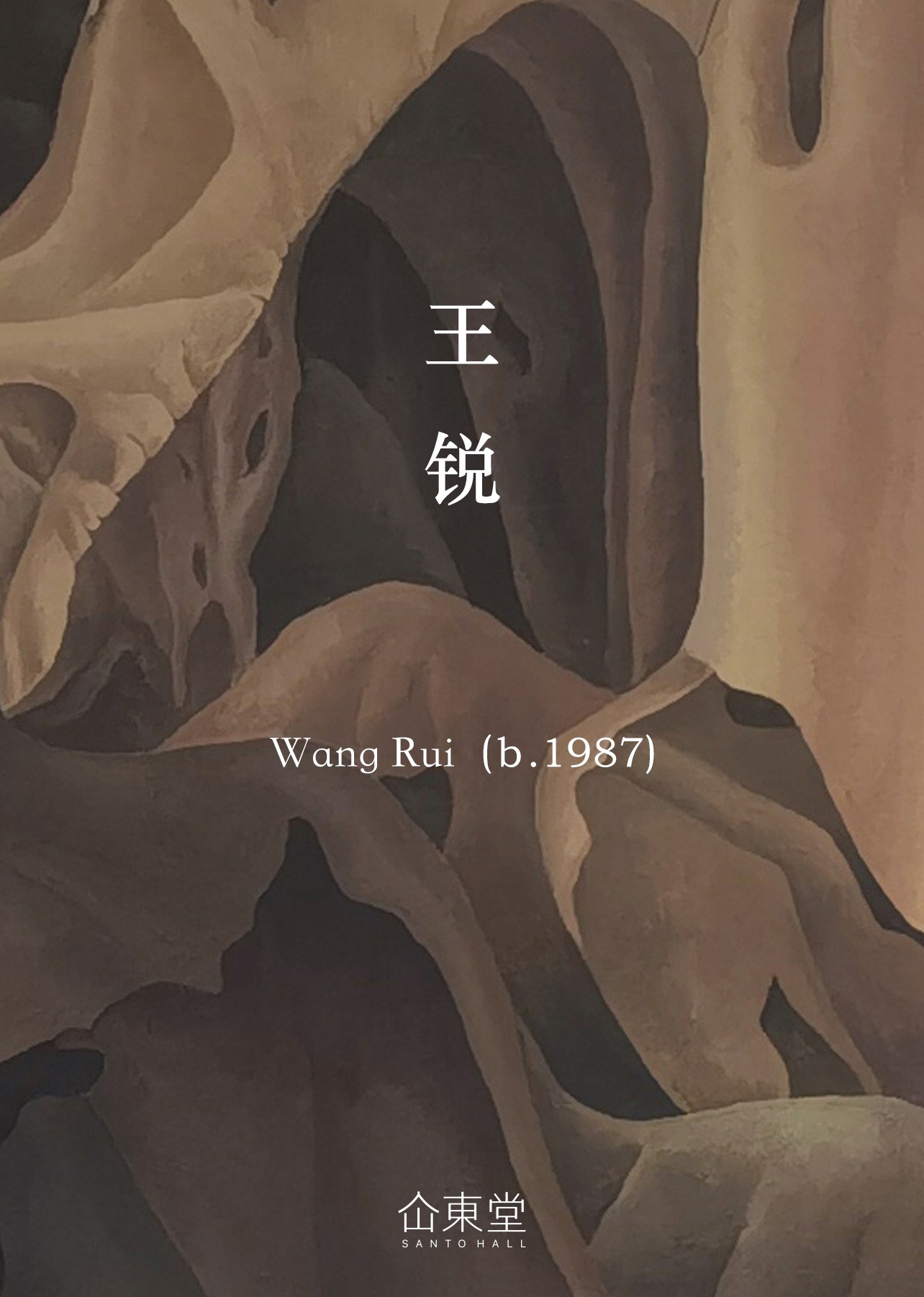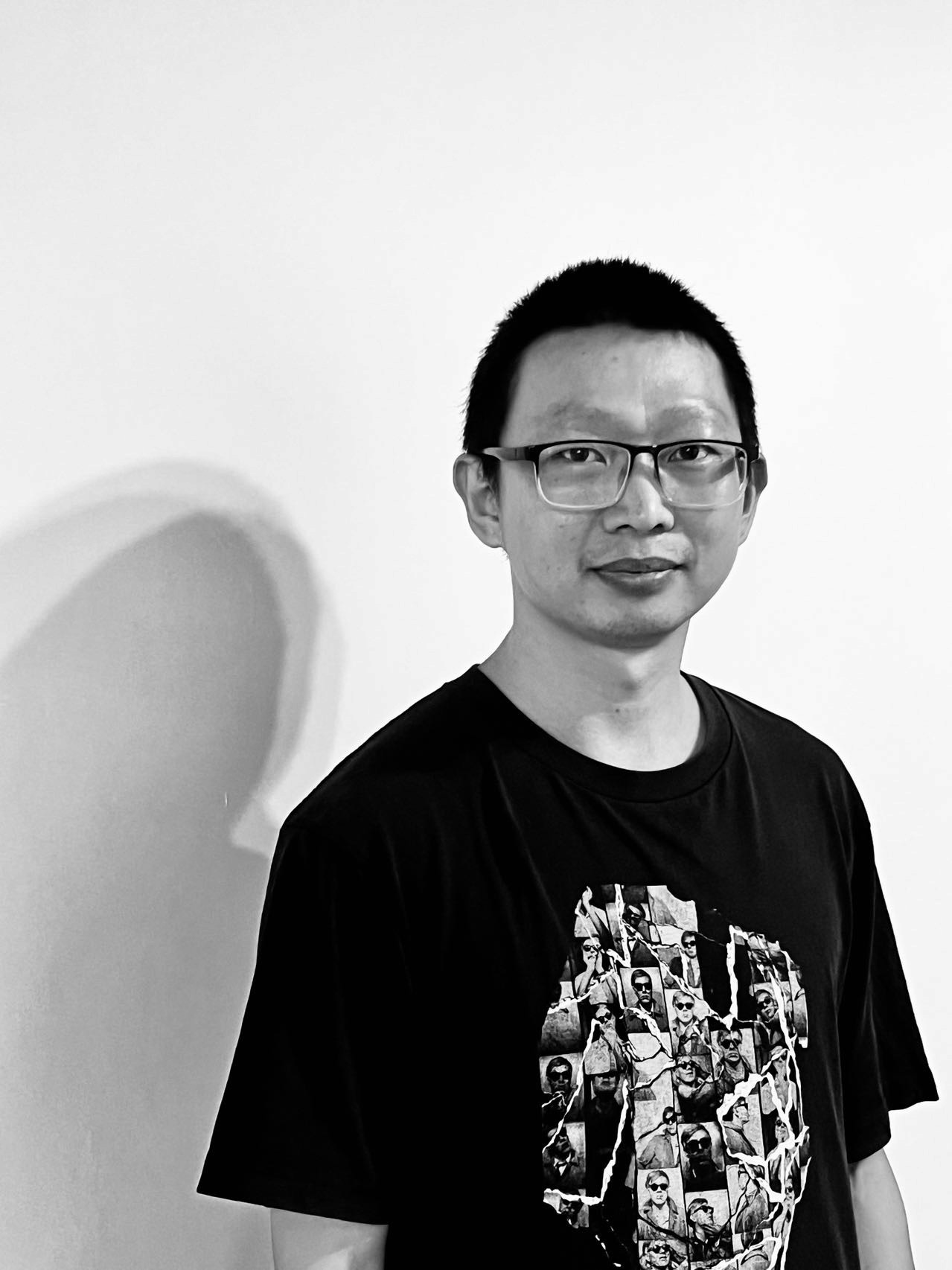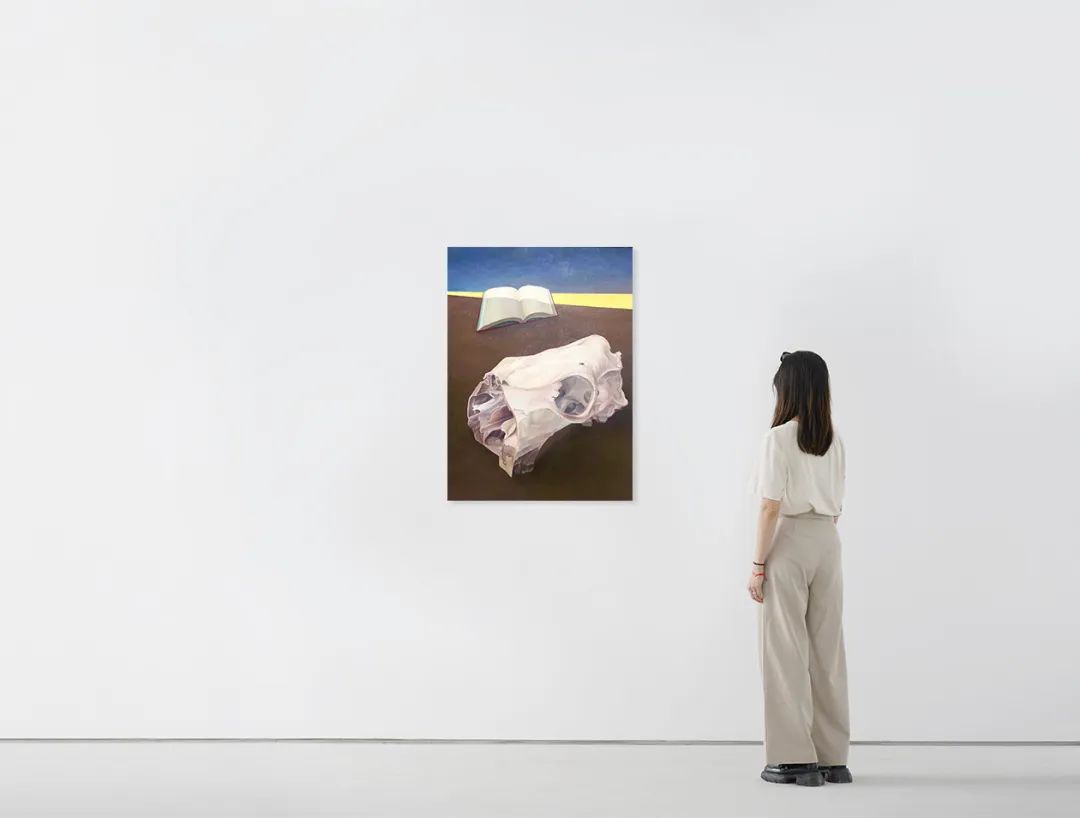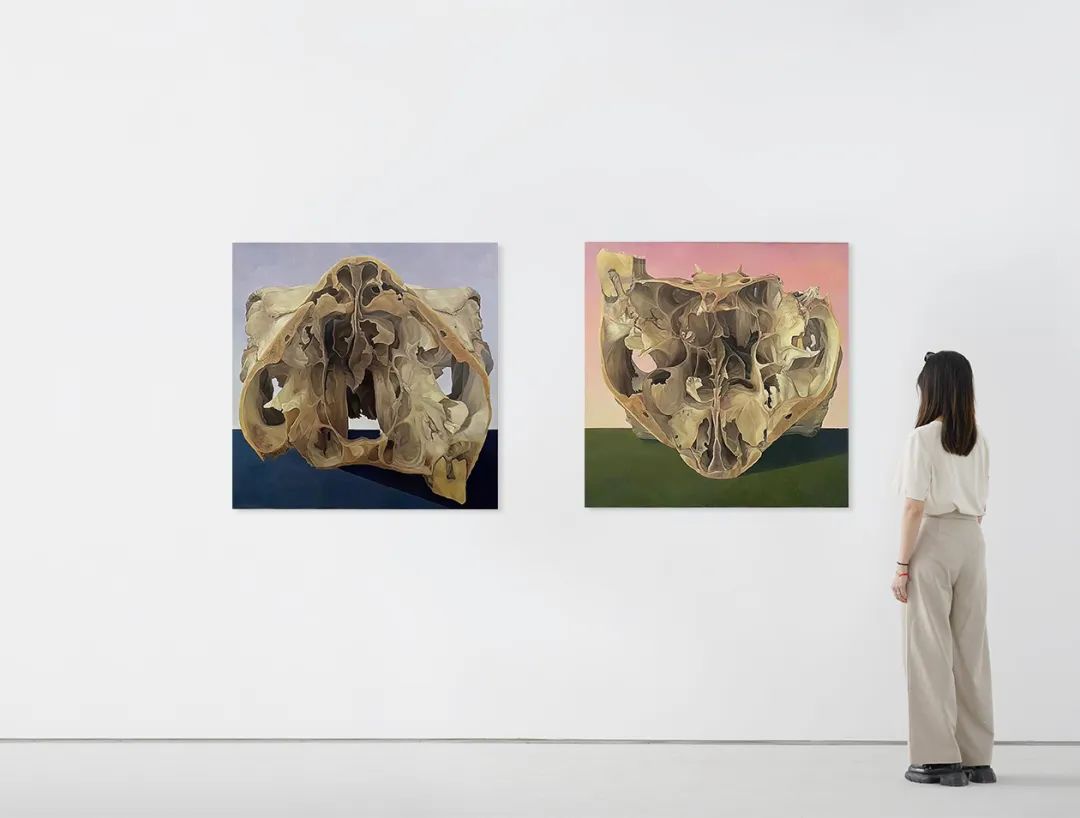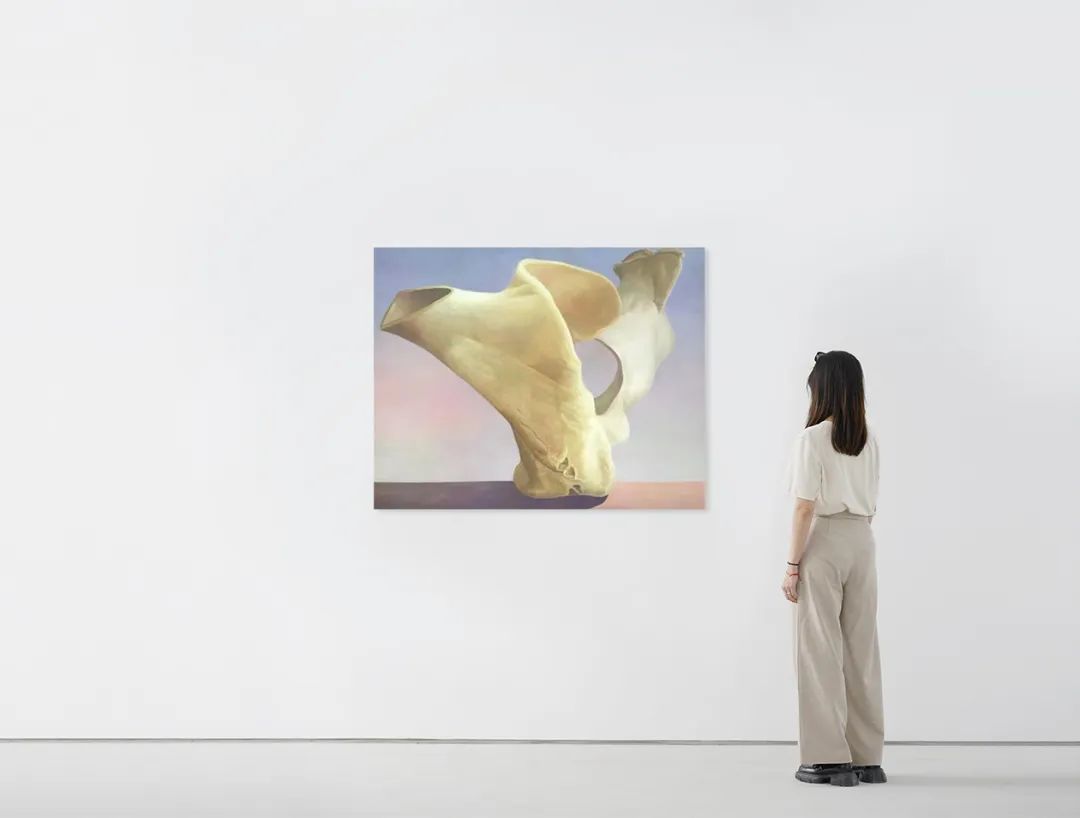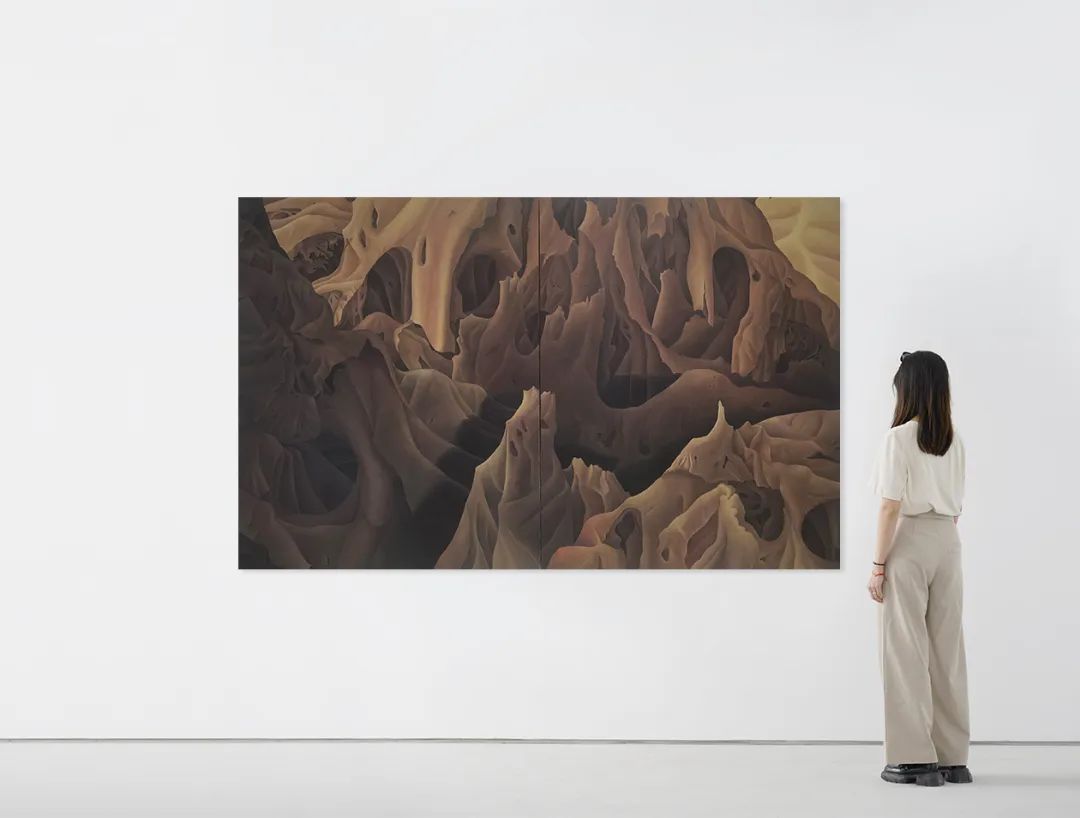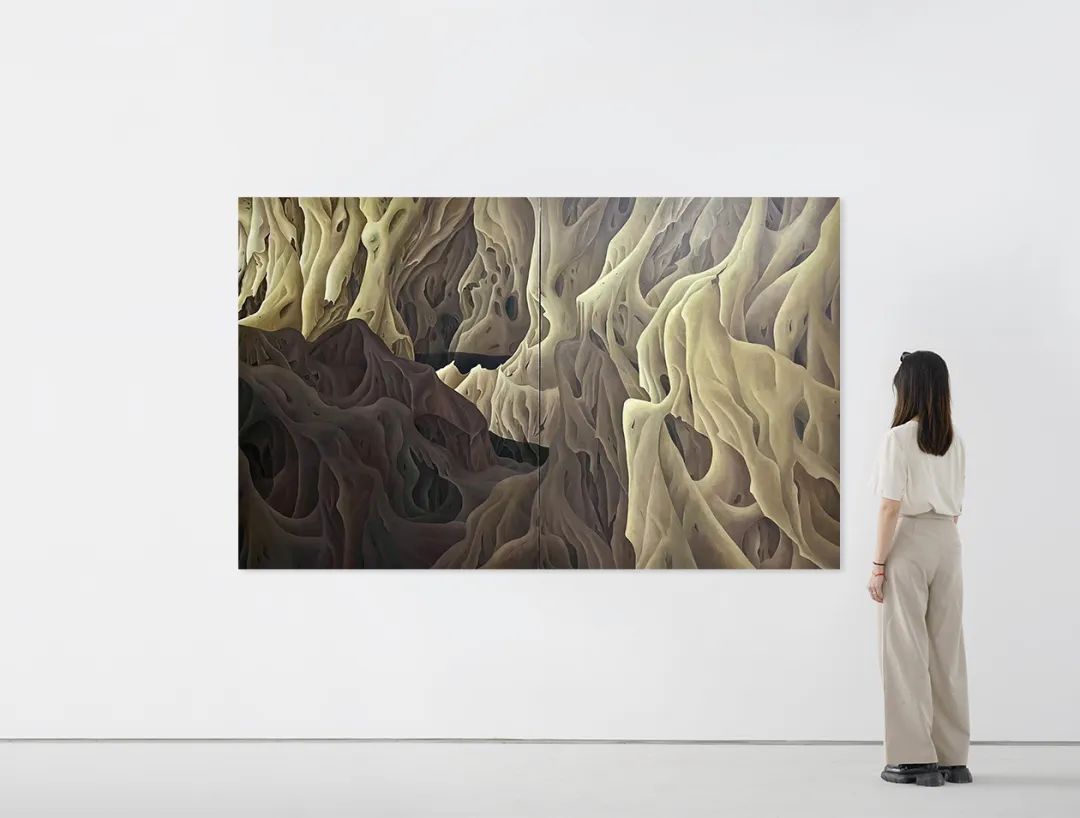荒远处的隐秘角落
Desolated state
and it's hidden corner
在王锐作品"荒陬"系列中,画面似乎天然地带有多义性。不规则的多孔结构自动过滤意识,直到某种体验或记忆中的画面被滤出:荒陬既是静物也是风景,既是写实山水也是梦境呓语......或者说它就是事物的中间状态,两端联通着具象与抽象,作为意识与审美的载体而存在。
遗-2 60x80 cm 布面油画 2022
"荒陬"系列的起点是王锐对骨头及其内部结构的偏爱。当骨头被切开后,那些起伏蜿蜒的片状或线状骨质结构呈现出介于具象与抽象之间的美感,让王锐为之着迷。面对事物天然的"中间状态",画家拥有了将情绪与感受植入其中的更大自由,也需要在两种创作风格之间反复摇摆,最终让具象/抽象在画面上汇合交融。
默-正面/默-反面 100x100 cm 布面油画 2022
参照传统奇志山水的形态与韵味,王锐以变形与置换的方式向古典致敬,让画面直抵某种潜意识体验。有时候他只凭借感觉和想象来作画,但画到具体的细节,就需要参考具体物象,来让画面成立;当画面过于具象,就需要让想象力和情绪更多地接管画面。在不断纠结与反复中,王锐一点点将画面向前推进,直到作品抵达某种平衡状态,再用细腻的笔触完成收尾。
骨相 1-圣杯 80x100 cm 布面油画 2022
至于画家注入画面中的情绪,则要到细微之处去找寻:比如那些线条两侧色彩的微妙过渡、在两块凹陷里的绚烂或者某处被繁复修饰、通往画面深处的孔洞......走进画面内部,参差不齐的线条,勾勒出一个个半独立的空间,气韵在其中勾连翻滚;冷静细腻的笔触下,依然透露出画家克制表达的情绪温度,那些孔洞、罅隙、褶皱、凸起与凹陷,既是客观物象与山水情趣的杂糅,也是藏匿情绪与体验的最佳场地。
荒陬1 (局部)
荒陬1 150x240 cm 布面油画 2022-2023
以荒陬命名,取其"荒远处的隐秘角落"之义。画面所表现的内容,似乎只有在某处臆想的空间才有存在的可能。观看王锐的绘画,我们会猜想:荒陬既是想象中的风景,也是某种切身体验的底色——正如柳宗元《梦归赋》中所写的:"夕余寐于荒陬兮,心慊慊而莫违。"这种生命受困的感受,与画家所体验到的精神困局充满相通,于是画面与个体生命得以彼此生发,互相解释。
荒陬2 150x240 cm 布面油画 2023
因此对王锐来说,"荒陬"系列不仅是生命中某个时期的创作,更是对于整体生存体验的记录。从云南到北京的变迁,地理上的迁移带来创作方向乃至整个人的改变。变动中的创作或创作中的变动,需要画家向内向外同时探索,既要确定新的绘画语言,也要让个体的生存体验重新与画面遭遇去表达个体性。于是,在一个寒冷冬夜,那块骨头似乎是在有意等待画家的捡拾,等待画家从自我与世界的中间状态出发,以摇摆的姿态开启创作的新阶段。
In Wang Rui's Desolated State series, the imagery appears to be ambiguous. The irregular porous structures automatically filter certain experiences and visual memories in the consciousness; it is both still life and landscape, realistic while dreamlike. Desolated State embodies the inherent "liminal state" of things, bridging the figurative and abstract and thus exists as a vessel for consciousness and aesthetics.
Wang Rui's appreciation for bones and their internal structures is the starting point of the series. When bones are sliced open, their undulating and winding lamellar or linear structures present a fascinating blend of visual duality. Wang Rui infuses his emotions and sensations into these structures, oscillating between the extremes of representation and abstraction, allowing these two extremes to converge and blend for a delicate expression.
Drawing inspiration from the traditional visual language of classical literati landscape painting, Wang Rui pays homage to it through deformation and substitution, allowing the artwork to reach a certain level of subconscious experience. Sometimes, he relies solely on intuition and imagination, but reference to objects is needed to establish the composition when it comes to specific details. When the image becomes too figurative, the artist allows the imagination and emotions to take over. Through constant deliberation and iteration, Wang Rui gradually advances the composition until it reaches a state of balance, then meticulously completes the finishing touches with delicate brushwork.
The emotions injected into the artwork are often hidden in detail; the subtle transitions of color by the lines, the brilliance within the recessed areas, and the embellished openings leading to the depths of the composition. As we step into the inner realm of the painting, the irregular lines delineate semi-independent spaces wherein a sense of vitality intertwines and rolls, creating a captivating and dynamic visual experience. Beneath the calm and delicate brushstrokes, the artist's restrained expression still reveals an emotional temperature. Those openings, cracks, folds, protrusions, and recesses are not only a fusion of objects and the charm of landscapes but also the perfect abode for emotions and experiences to hide.
Desolated State captures the essence of "hidden corners of the liminality." The depicted content of the artwork only exists in the imagined space. When observing Wang Rui's paintings, we can surmise that it is not only a landscape of imagination but also the underlying background of his personal experience, just as described in Liu Zongyuan's Dream of the Returning: "I slumber in the desolate wilderness at dusk, my heart was so disturbed and trapped." The feeling of being trapped in the desolate wilderness resonates with the spiritual dilemma experienced by the artist. Thus, the interplay between the artwork and individual life unfolds, mutually interpreting each other.
Therefore, for Wang Rui, the Desolated State series is a creation of a certain period in life and also a record of his existential experience. The transition from Yunnan to Beijing, both geographically and artistically, has shifted the artist's direction and even his entire being. Amidst the changes, the painter needs to explore inward and outward simultaneously. This process involves creating a new visual language that blends the individual's existential experience with painting, expressing his unique subjectivity. On a cold winter night, that piece of bone seems to be intentionally waiting for the painter's discovery, awaiting the artist's departure from the liminal space between self and the world, initiating a new phase of artistic creation with a swaying posture.

